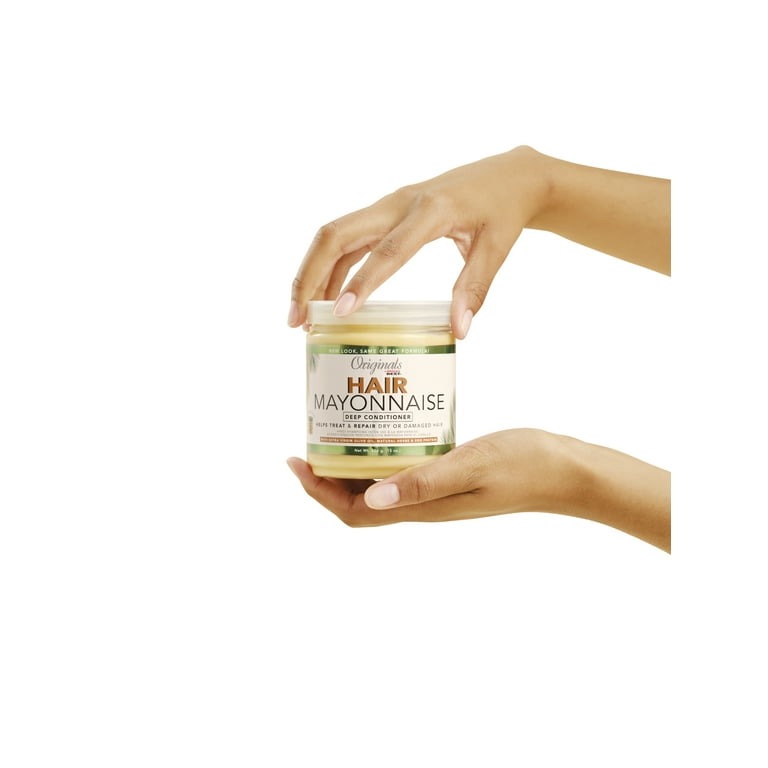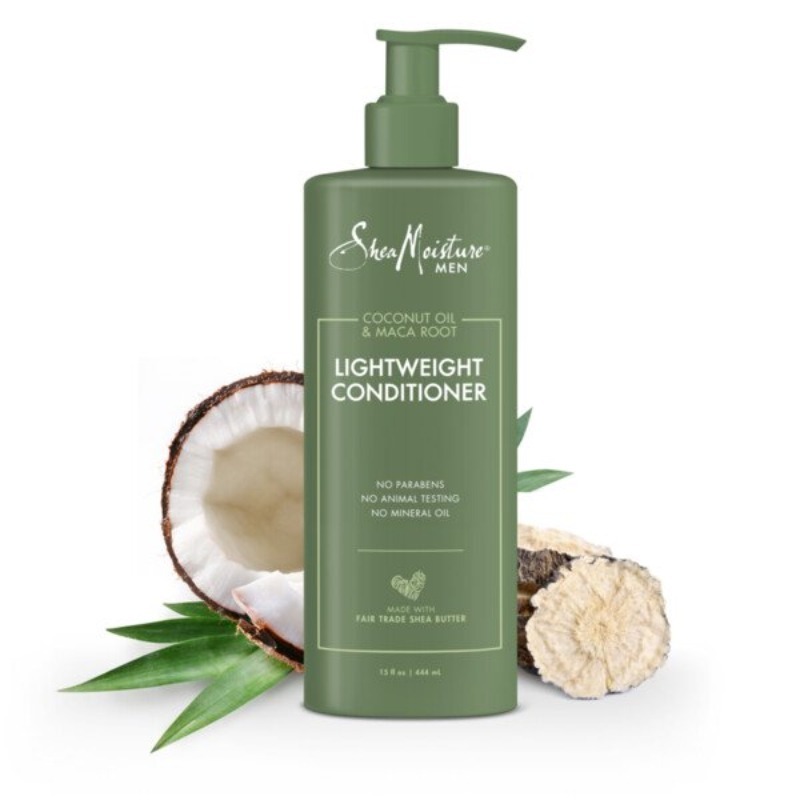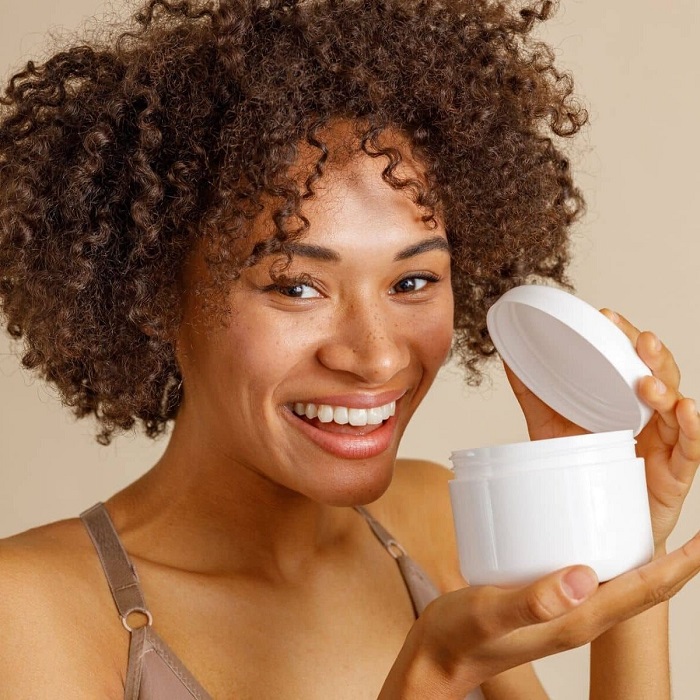The Importance of Deep Conditioning for Curly Hair
Deep conditioning is a must for anyone with curly hair. It nourishes and revitalizes curls that are naturally prone to dryness. The unique texture of curly hair makes it difficult for the natural oils from the scalp to travel down the hair shaft. Because of this, curls can easily become dehydrated and frizzy. A good deep conditioner for curly hair re-hydrates and repairs, giving your curls the moisture and attention they need.
Regular deep conditioning treatments can help improve the overall health and appearance of your curls. They penetrate deeper into the hair shaft than standard conditioners, providing long-lasting hydration. This helps in reducing breakage, split ends, and tangles. Over time, your curls will become softer, more manageable, and less prone to frizz.
Moreover, deep conditioning can enhance the definition of your curls. By moisturizing each hair strand, it helps curls clump together and form a more defined pattern. This means more bounce and vitality, which is the hallmark of healthy curly hair. Including regular deep conditioning in your hair care routine is a small investment that yields great rewards for your curls.
Best Ingredients in Deep Conditioners for Curly Hair
When choosing a deep conditioner for curly hair, the ingredient list is critical. Look for deep conditioners that contain emollients, which soften and smooth the hair. Common emollients include shea butter, olive oil, and argan oil. These oils are excellent for locking in moisture and providing shine.
Humectants are another type of ingredient to look for. They attract moisture from the environment to the hair. Glycerin, honey, and aloe vera are all powerful humectants that can help maintain hydration levels in your curls.
Proteins like keratin and silk protein can strengthen the hair shaft, reducing breakage and promoting elasticity. However, be cautious not to overdo it as too much protein can make the hair brittle.
Additionally, seek out ingredients that help fight frizz, like coconut oil and certain silicones made specifically for curly hair. These can create a protective barrier around the hair, keeping it smooth and reducing frizz.
Avoid harsh sulfates, parabens, and alcohols that can strip the hair of natural oils, leading to more dryness and frizz. Opt for products that are as natural as possible and consider hypoallergenic selections if you have a sensitive scalp or allergies.
In summary, the best deep conditioner for curly hair will contain a mix of emollients, humectants, and proteins while avoiding harsh chemicals. By identifying and choosing conditioners packed with these nourishing ingredients, you can keep your curls well-moisturized and healthy.
How to Choose the Right Deep Conditioner for Your Curl Type

Choosing the right deep conditioner for your curly hair can be critical. Not all curls are the same, and different types require unique care. Understanding your curl type is the first step. Do you have loose waves, tight ringlets, or coily patterns? Each hair type reacts differently to ingredients and formulations.
For looser waves, lightweight formulas are best. They moisturize without weighing the hair down. Heavier products suit tight curls and coils better. They need more intense hydration.
Next, assess the porosity of your hair. Low porosity hair can resist moisture, so it needs heat to help the conditioner penetrate. High porosity hair absorbs moisture quickly but also loses it fast. Look for deep conditioners that seal in moisture.
Consider the needs of your hair. Is it damaged or healthy? If you have split ends or breakage, seek out repair-focused ingredients. Healthy hair might just need maintenance, so a simple formula might do.
Experiment with different products. Pay attention to how your curls respond. You might need to try several deep conditioners before finding the best one. Remember, a small sample can often tell you a lot. So, if possible, get travel-sized versions.
Finally, read reviews and recommendations. Learn from the experiences of those with similar hair types. However, stay open to the idea that what works for others might not work for you.
Matching the right deep conditioner to your curl type can transform your hair’s health and appearance. Take the time to choose wisely and enjoy the benefits of well-nourished, vibrant curls.
Step-by-Step Guide to Deep Conditioning Curly Hair
Proper deep conditioning is a game-changer for maintaining the health of curly hair. Here’s a straightforward guide to ensure you’re getting the most out of your deep conditioning sessions.
- Start with Clean Hair: Begin with shampooing your hair to remove build-up. Use a gentle, sulfate-free shampoo that won’t strip your hair of its natural oils.
- Apply Generously: Coat your hair thoroughly with your chosen deep conditioner for curly hair. Focus on the ends, which tend to be the driest.
- Use Your Fingers or a Wide-Tooth Comb: Gently detangle your hair, starting from the ends and working your way up. This prevents breakage and ensures even distribution of the product.
- Cover Your Hair: Use a shower cap or a plastic bag to cover your hair. This traps in heat from your scalp, increasing the conditioner’s effectiveness.
- Add Heat (Optional): If your hair is low porosity, apply gentle heat with a hairdryer. This opens up the cuticles, allowing the conditioner to penetrate better.
- Wait it Out: Leave the deep conditioner in for at least 30 minutes. Follow the instructions on the product, as some may recommend a longer sitting time.
- Rinse with Cool Water: Wash the conditioner out with cool water. This seals the hair cuticle, locking in moisture and giving your hair extra shine.
- Style as Usual: Proceed with your normal styling routine. Your curls should feel moisturized and more manageable.
By regularly incorporating these steps into your curly hair care regimen, you’ll notice a remarkable improvement in the health and vitality of your curls over time.
DIY Deep Conditioning Treatments You Can Try at Home

For those who love a DIY approach or are looking to save money, making your own deep conditioner for curly hair is a great option. Here are a few simple recipes you can whip up with ingredients likely already in your kitchen.
- Banana and Honey Mask: Mash a ripe banana with a tablespoon of honey. Bananas are rich in potassium and vitamins that help moisturize and repair damaged hair. Honey, a natural humectant, draws in moisture.
- Avocado and Olive Oil: Blend one ripe avocado with two tablespoons of olive oil. Avocado is packed with fatty acids, making it an ideal emollient, while olive oil adds extra hydration.
- Coconut Oil and Shea Butter: Melt equal parts of coconut oil and shea butter. Let them cool then apply to your hair. Both ingredients are emollients and work to lock in moisture and reduce frizz.
- Yogurt and Egg Treatment: Mix half a cup of plain yogurt with one whole egg. Yogurt’s lactic acid can help cleanse the scalp, while eggs provide protein for strength.
After preparing your chosen treatment, follow similar steps to a store-bought deep conditioner:
- Apply to clean, damp hair.
- Focus the mixture on the ends of your hair.
- Cover with a shower cap for at least 30 minutes.
- Rinse with cool water to close the hair cuticles.
By using these DIY treatments, you can nourish your curls with natural ingredients and customize your deep conditioning routine to suit your hair’s needs.
The Role of Heat in Deep Conditioning Curly Hair
Heat plays a vital part in deep conditioning curly hair. It opens up hair cuticles, allowing conditioner to penetrate deeply. This is especially helpful for low porosity hair that struggles to absorb moisture. When hair cuticles are lifted, the deep conditioner can enter and properly hydrate the hair shaft.
For best results, apply gentle heat while conditioning. You can use a hairdryer with a diffuser, or sit under a hooded dryer. If these aren’t available, even a warm towel wrapped around your head works. The heat should be moderate; too much can damage your hair.
After heating, let your hair cool down before rinsing. This helps seal the cuticles and lock in the moisture. It also increases the shine and leaves your curls looking healthier.
Heat isn’t always necessary, though. If your hair is high porosity or damaged, skip the heat. These hair types can already absorb and lose moisture quickly. Adding heat could lead to more dryness or breakage.
Always follow your deep conditioner’s instructions. Some have specific heat recommendations or tell you when heat isn’t needed.
Maintaining Curly Hair Health Beyond Deep Conditioning
While deep conditioning is essential, maintaining curly hair health requires a comprehensive approach. Here’s how to keep your curls in top shape between treatments:
- Stay Hydrated: Drinking plenty of water benefits your entire body, including your hair. Hydration starts from within, so ensure you’re taking in enough fluids.
- Gentle Detangling: Handle your curls with care. Use a wide-tooth comb or your fingers to detangle gently from the ends to the roots to avoid breakage.
- Regular Trims: Get regular trims to prevent split ends from traveling up the hair shaft. Trimming helps to maintain healthy ends and curls.
- Protective Styles: Try protective hairstyles that keep your ends tucked away. This can help to reduce knotting, tangles, and breakage.
- Limit Heat Styling: Too much heat can damage your curls. Limit the use of flat irons and curling wands, and always use a heat protectant when you do.
- Silk or Satin: Sleep on silk or satin pillowcases, or wear a silk or satin cap to bed. These materials reduce friction, which helps to prevent frizz and breakage.
- Balanced Diet: Eat a diet rich in vitamins and minerals that support hair health. Foods high in omega-3 fatty acids, biotin, and protein can strengthen hair.
- Minimize Stress: High stress can impact your hair health. Incorporate stress-reduction techniques like exercise, meditation, or hobbies into your routine.
Remember, consistent care is key to keeping your curls looking and feeling their best. Incorporate these tips into your hair care routine alongside deep conditioning treatments to achieve the most robust, resilient, and beautiful curly hair possible.
Common Mistakes to Avoid When Deep Conditioning Curly Hair

Achieving perfect curls is not just about choosing the right deep conditioner for curly hair; it’s also about avoiding common pitfalls during the conditioning process. Here are several mistakes to steer clear of:
- Skipping Regular Treatments: Consistency is critical. Missing deep conditioning sessions can lead to drier, more fragile curls.
- Not Detangling Beforehand: Always detangle your hair before applying deep conditioner. This ensures even coverage and better absorption.
- Rinsing Out Too Quickly: Give the deep conditioner time to work. Rushing the process can prevent your hair from gaining full benefits.
- Using Heat Excessively: While heat can aid in penetration, too much can damage your curls. Use moderate heat and follow your conditioner’s guidelines.
- Ignoring Product Instructions: Every product is different. Not following specific directions can result in less effective conditioning.
- Applying Conditioner to Dirty Hair: Deep conditioners work best on clean hair. Apply it after shampooing, not before.
- Forgetting Your Hair’s Needs: Gauge your hair’s moisture and protein requirements. Balance is key; too much protein or moisture can harm your hair.
- Overlooking Hair Ends: The ends of your hair are the driest. Neglecting them can lead to split ends and breakage.
- Rinsing with Hot Water: Hot water can strip moisture. Instead, use cool water to seal the cuticles and retain hydration.
By avoiding these common mistakes, you can substantially improve the effectiveness of your deep conditioning routine and ensure your curls remain healthy and vibrant.
